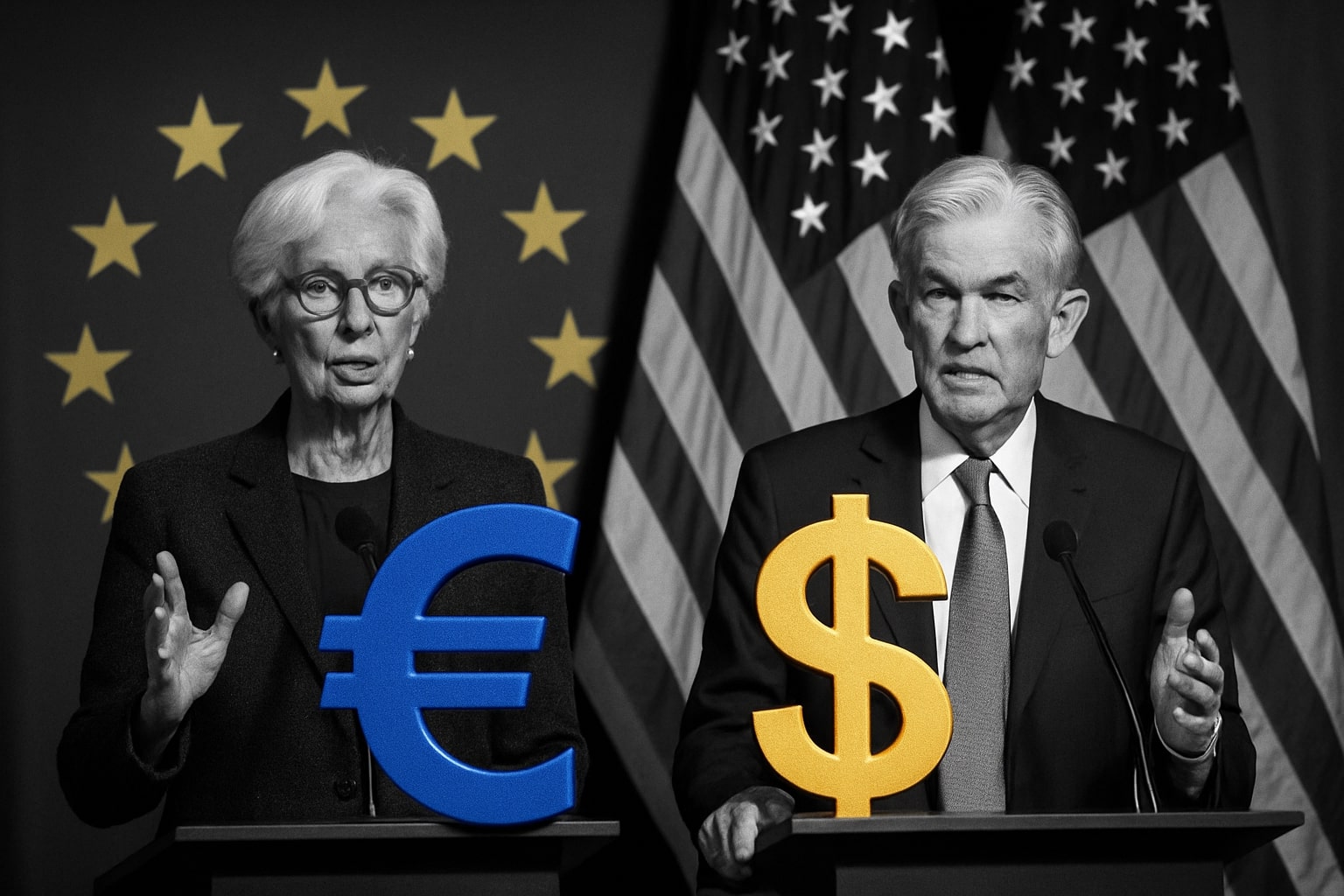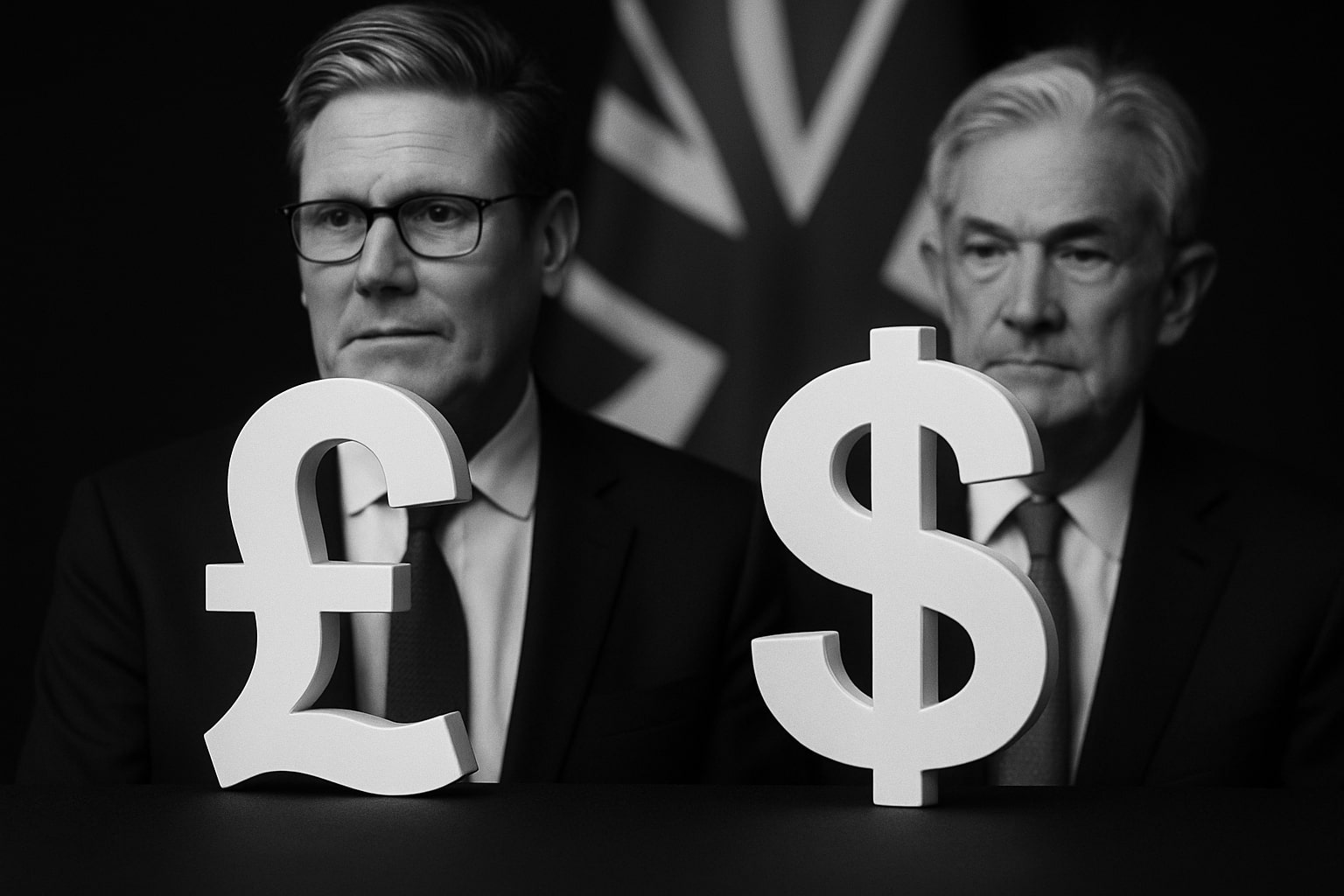
EUR/USD Price Forecast - Euro Falls Toward 1.1530 as Fed Tightens Tone
The euro weakens amid stronger U.S. payrolls, falling Eurozone construction output (-0.5%), and Fed cut odds collapsing to 34%. Traders eye 1.1480–1.1410 | That's TradingNEWS
EUR/USD Trades Near 1.1530 as Fed Signals, Weak Eurozone Data, and Mixed U.S. Jobs Numbers Reshape Market Outlook
The EUR/USD pair remains under pressure, trading near 1.1530, down from 1.1614 earlier this week, as the U.S. dollar extends its advance following the latest Federal Reserve minutes and a stronger-than-expected U.S. Nonfarm Payrolls (NFP) report. The euro continues to struggle amid weak regional data, softening construction and manufacturing indicators, and renewed uncertainty over the European Central Bank (ECB) policy path. Traders now see limited room for the euro to recover ahead of the Fed’s December 10 meeting, as rate-cut expectations have collapsed from nearly 90% last month to just 34%, leaving the dollar broadly supported across all majors.
U.S. Labor Data Reinforces Dollar’s Dominance Over EUR/USD
The September U.S. jobs report, delayed by the previous government shutdown, delivered mixed signals but confirmed a labor market still tight enough to deter immediate easing. Nonfarm Payrolls rose by 119,000, beating expectations of 50,000, while unemployment climbed to 4.4%, the highest since 2021. Average hourly earnings increased 0.2% month-on-month and 3.8% year-on-year, below the prior 0.3% and 3.9%, signaling wage growth moderation. Despite that softening, the Fed’s CME FedWatch data now shows only 39% odds of a December rate cut, down from 50% last week. This repricing boosted the U.S. Dollar Index (DXY) to just above 100.00, while the 10-year Treasury yield held firm at 4.12%, underpinning continued capital inflows into dollar assets.
Cleveland Fed President Beth Hammack reinforced this stance, warning that cutting rates too early could “undermine policy credibility and invite financial instability.” Her tone effectively confirmed that the Fed will prioritize inflation control over growth momentum, a message that directly weakens EUR/USD sentiment heading into year-end.
Eurozone Weakness Adds Weight to the Bearish EUR/USD Trend
Across the euro area, economic indicators remain broadly disappointing. Eurozone construction output contracted 0.5% month-on-month in September after a 0.3% drop in August, while annual figures also slipped into negative territory. Final consumer price inflation was confirmed at 2.1% headline and 2.4% core, reinforcing the ECB’s stance that rates can stay restrictive. Meanwhile, industrial output in Germany and Italy continues to deteriorate, and consumer sentiment remains negative as high borrowing costs erode household confidence.
The ECB’s Luis de Guindos reiterated that inflation could stabilize near target without further rate hikes, suggesting that the next policy shift—if any—will depend on growth data rather than inflation. Yet with Eurozone PMIs hovering near contraction territory (services PMI last at 49.6) and unemployment steady at 6.5%, the region’s limited resilience offers little support to the euro.
Technical Analysis: EUR/USD Faces Critical Breakdown Zone at 1.1510–1.1480
The technical structure of EUR/USD has turned distinctly bearish. The pair remains trapped under a descending trendline from October highs around 1.1650, and repeated closes below the 20-day EMA confirm sellers’ control. The RSI at 31 reflects near-oversold momentum with no bullish divergence, suggesting that downside risks persist. The key breakdown zone lies between 1.1510 and 1.1480, with a decisive breach likely to trigger a move toward 1.1411, the next major demand level observed during the August consolidation.
On the upside, a short-term rebound would require a daily close above 1.1550, opening room toward 1.1598. However, price remains capped below its 50-day moving average near 1.1650, while the 100-day average at 1.1720 now acts as firm resistance. The broader trend continues to favor the U.S. dollar until the euro reclaims these technical thresholds.
Euro Fundamentals Erode as Yield Spreads Favor the Dollar
The German-U.S. 10-year yield spread, currently near –180 basis points, continues to weigh on the euro. The gap remains close to its widest since March 2024, signaling that capital prefers dollar-denominated debt for carry returns. Meanwhile, the Euribor 3-month rate remains anchored around 3.81%, compared with the U.S. 3-month Treasury yield at 5.28%, maintaining a clear 147-basis-point advantage for dollar assets. This structural imbalance underpins the dollar’s premium and explains why the euro failed to benefit even from occasional risk-on sessions in global equities.
Market Reaction to Mixed U.S. Data: Volatility Without Directional Relief
Following the delayed jobs report, EUR/USD briefly rebounded from 1.1502 to 1.1541, but gains were capped as traders absorbed the conflicting signals—solid headline hiring against slowing wage growth and a modest rise in unemployment. The mixed data softened dollar momentum only temporarily, as investors concluded that the Fed would still delay cuts until 2026. Futures now price the first full cut only by June 2026, reflecting the persistence of higher-for-longer policy across global markets.
At the same time, the University of Michigan Consumer Sentiment Index remains above 67, while U.S. housing starts (1.35 million) and building permits (1.46 million) show no sign of rapid deterioration. The euro’s failure to benefit from these softer U.S. metrics highlights the structural imbalance driving EUR/USD’s weakness.
Investor Sentiment and Near-Term Trading Range
The euro’s near-term trading pattern reflects indecision rather than capitulation. Market depth data show that speculative long positioning has declined 6% week-to-week, while net shorts increased to their highest since March 2024. Despite oversold technicals, there is no broad evidence of capitulation among euro buyers. Institutional traders continue to view 1.1480–1.1500 as a medium-term accumulation zone, though participation remains light ahead of the next major data catalyst.
Options volatility on EUR/USD has increased to 7.8%, signaling traders are bracing for larger price swings into the December 10 Fed meeting. The implied volatility curve steepened for one-week maturities, showing increased demand for downside hedges on the euro.
Read More
-
Meta Stock Price Forecast - Meta Faces $16B Tax Blow and $100B CapEx Shock as Shares Sink to $587
20.11.2025 · TradingNEWS ArchiveStocks
-
XRP Price Forecast - XRP-USD Tests $2.00 as XRP ETF Boom Fails to Halt 11% Weekly Drop
20.11.2025 · TradingNEWS ArchiveCrypto
-
Oil Price Forecast - Oil Prices Recover as U.S. Draw Depletes 3.4M Barrels
20.11.2025 · TradingNEWS ArchiveCommodities
-
Stock Market Today: NVDA +5%, WMT +6%, TSLA +5% Drive Nasdaq to 23,045 in Explosive AI-Led Rally
20.11.2025 · TradingNEWS ArchiveMarkets
-
GBP/USD Price Forecast - Pound Slides Toward 1.3050 as Hawkish Fed and Weak UK CPI
20.11.2025 · TradingNEWS ArchiveForex
Forward Guidance and Macro Outlook
With limited data between now and the December FOMC, the euro’s recovery prospects remain constrained. Markets will closely monitor the HCOB Services PMI (expected 49.8) and ECB Vice President de Guindos’s remarks for clarity on growth prospects. Across the Atlantic, attention shifts to U.S. flash PMIs and jobless claims, which could determine whether the Fed’s “no-cut” stance holds into early 2026.
If U.S. yields stabilize near 4.1–4.2%, EUR/USD may consolidate within 1.1480–1.1580 for several sessions. A dovish surprise in upcoming U.S. data could trigger a correction toward 1.1650, but structural resistance remains strong. The ING Bank long-term model still targets 1.18 by end-2025, while Wells Fargo expects a drop to 1.12 by Q1 2027, highlighting the uncertainty embedded in global rate differentials.
Verdict: EUR/USD — SELL / SHORT-TERM BEARISH
The balance of data points to continued downside in EUR/USD, driven by diverging policy trajectories, weak Eurozone growth, and strong U.S. labor resilience. Technical conditions favor further weakness toward 1.1480–1.1410, with short-term resistance capped near 1.1590–1.1650. Unless upcoming Eurozone PMIs surprise significantly to the upside or the Fed signals a pivot, the bias remains bearish


















